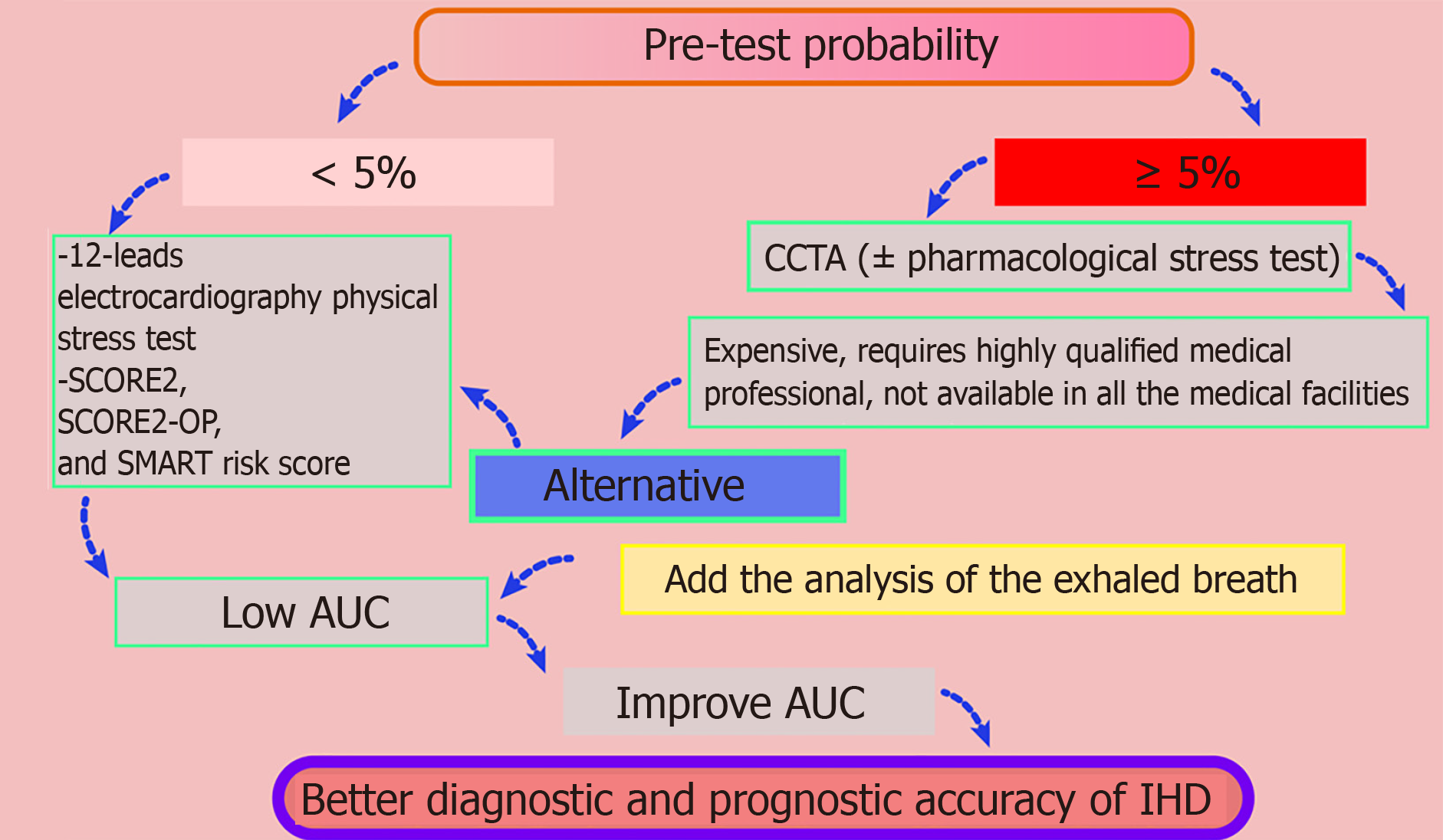Copyright
©The Author(s) 2025.
World J Cardiol. Apr 26, 2025; 17(4): 106593
Published online Apr 26, 2025. doi: 10.4330/wjc.v17.i4.106593
Published online Apr 26, 2025. doi: 10.4330/wjc.v17.i4.106593
Figure 1 Integration of exhaled breath analysis into the current diagnostic pathway for ischemic heart disease.
Clinical decision-making typically begins with an assessment of pre-test probability. Patients with < 5% risk undergo accessible but low-accuracy methods such as 12-lead electrocardiography physical stress tests and cardiovascular risk-scoring systems (SCORE2, SCORE2-OP, SMART). Patients with ≥ 5% risk are directed to high-accuracy modalities such as coronary computed tomography angiography, with or without pharmacological stress testing. However, these tests are resource-intensive, require specialized personnel, and are not universally available. Introducing exhaled breath analysis as an adjunct diagnostic tool can serve as a cost-effective alternative to improve the area under the receiver operating characteristic curve, thereby enhancing diagnostic and prognostic accuracy for ischemic heart disease. AUC: Area under the receiver operating characteristic curve; CCTA: Coronary computed tomography angiography; IHD: Ischemic heart disease.
- Citation: Marzoog BA, Kopylov P. Volatilome and machine learning in ischemic heart disease: Current challenges and future perspectives. World J Cardiol 2025; 17(4): 106593
- URL: https://www.wjgnet.com/1949-8462/full/v17/i4/106593.htm
- DOI: https://dx.doi.org/10.4330/wjc.v17.i4.106593













